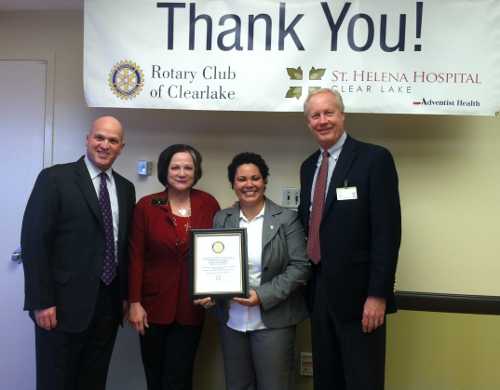
I thought I’d write about something hot and spicy for Valentine’s Day: cayenne peppers.
These racy, red numbers pack a punch, grabbing our attention in the form of dried red pepper flakes, tangy, piquant sauces and as a spice powder that adds heat to a variety of foods.
The cayenne pepper is a member of the capsicum genus of plants, which includes all types of peppers, from mild bells to ultra-hot chilis.
The plant genus is named for the chemical compound capsaisin, which gives peppers their hot taste by stimulating our nerve endings, especially mucous membranes. The more capsaisin present in the pepper, the hotter it tastes.
The spiciness of a pepper is measured by a Scoville scale, named for its developer, American pharmacist Wilbur Scoville, who created the method in 1912.
Scoville heat units are assigned based on the capsaisin present in the pepper. Bell peppers, for example, have no significant heat, so have a Scoville rating of zero. Spicy habanero chilis, on the other hand, have a Scoville rating of between 100,000 and 350,000.
The hottest known pepper, the Trinidad Scorpion Butch T pepper, can have a Scoville rating of more than 1,400,000. Now that’s hot! (Even its name sounds scary.)
The cayenne pepper seems mild in comparison at between 10,000 and 30,000 Scoville heat units. Even so, as one of its monikers, red hot chili pepper, implies, it imparts quite a bit of heat and spice to the taste buds. It’s about ten times spicier than the jalapeno pepper.
Other names for the cayenne pepper are Guinea spice, cow-horn pepper, aleva, mad pepper, and bird pepper. The name cayenne was bestowed in honor of the city of Cayenne in French Guiana, its supposed center of origin.
Cayenne peppers, like other members of the pepper family, are botanically considered berries. They ripen to a bright red color and have a long, slender shape. They’re often dried and strung to make decorative hangings in restaurants, making them one of the most recognizable peppers.
Peppers are native to Central and South America and have been cultivated there for more than seven thousand years.
When Columbus landed in the West Indies, the natives he encountered gave him tiny, red berries which reminded him of the red peppercorns grown in India, both in looks and pungency of taste.
It’s said that these berries were what led him to believe he landed in India; hence, Native Americans were called Indians and the little red berries (a relative of the cayenne pepper) were called peppers.
A wide variety of peppers were already cultivated in the Americas at the time, with variations in size, color, and pungency, including the cayenne pepper.
Within a few years of Columbus’ first voyage, chiles were being planted in Europe and North Africa. It didn’t take long for them to become popular in cuisines around the world, enlivening dishes with their bright, sharp flavor.
Cuisines as diverse as Spanish, African, Southeast Asian, Indian, and Chinese were all transformed by members of the pepper family.
Cayenne pepper is especially popular as a seasoning in the Creole and Cajun cooking of the American south. (What would gumbo or jambalaya be without cayenne pepper?) Vinegar-based hot sauces inspired by this region get their spicy kick from cayenne.
Cayenne is what provides the heat in Buffalo chicken wings. It seasons chicken biriyani, an Indian dish that’s said to be the favorite meal of Londoners.
It flavors all manner of Mexican-inspired foods. Enchilada sauce and tacos are seasoned with it, for example.
African spice pastes are made with it (such as Ethiopia’s berbere) and it’s a common component of dry rubs and sauces for meat, especially those which will be slow-cooked barbecue style.
Cayenne pepper is used to give a kick to sweets, too. Chocolate is a common pairing, with cayenne added to cake, candy, and hot cocoa or mocha latte recipes.
Cayenne pepper in dried flake form may be used to flavor pizza, spaghetti sauce and any foods that might benefit from a flavor kick.
Dried chili flakes may be used to infuse oil with flavor, either on their own or in combination with complementary flavors, such as garlic or herbs.
I like using olive oil flavored with chili flakes, garlic, and basil to season pasta pomodoro, a favorite pasta dish of mine. The flakes on their own may be used to make spicy chili oil for basting crostini (little bread toasts) to accompany bean or lentil soup.
Fresh cayenne peppers may be used for infusing oil, as well.
Most of the capsaisin in hot peppers is contained in the whitish membrane inside the pod to which the seeds are attached. The seeds themselves do not produce pungency, but because of their close proximity to the membrane, they absorb heat.
The level of heat in cooking may be controlled by removing some of the membrane and seeds of cayenne peppers.
It’s important to protect oneself when working in the kitchen with hot peppers. Rubber or latex gloves keep fingers from being burned by the chemical compounds that cause heat, and glasses can protect eyes from an errant spray of juice.
Don’t forget to avoid touching your face when your hands have been exposed to the heat from peppers.
The health benefits of cayenne peppers are legendary and legion. The same compound that gives cayenne its hot flavor, capsaisin, makes them an amazing natural medicine.
Scientific studies have shown capsaisin effective in fighting inflammation; providing pain relief; offering cardiovascular benefits by lowering blood cholesterol, triglyceride levels, and platelet aggregation; clearing congestion; boosting the immune system; preventing stomach ulcers; and assisting in weight loss.
In addition to all this, they’re very high in vitamin A and contain healthy stores of vitamins E and C. They also contain vitamin B6, fiber, vitamin K and manganese.
When shopping for fresh chili peppers, whether cayenne or another variety, look for firm, glossy pods with no soft spots. The stem end should look as though it was freshly cut. If dried chiles are what you’re after, make sure there’s no mold and that they smell as they should.
Today’s recipe utilizes two members of the pepper family: red bell peppers and cayenne peppers in two forms, the powdered spice and dried chili flakes.
Since rice is used as the thickening agent, the soup is low in fat, and fresh thyme, garlic, and cayenne, as well as a variety of vegetables, make it high in flavor.
If desired, use roasted red bell peppers in place of the fresh ones.
Before I go, did you know cayenne pepper is an effective way to discourage pests in your garden? Insects avoid capsaisin-filled cayenne peppers, and a safe, natural garden spray may be made with them.
If you’d like to find out how to do this, click on one of the following links: www.ehow.com/how_4881361_make-cayenne-pepper-spray.html or www.ehow.com/how_4867675_make-cayenne-pepper-spray-repellent.html.
Bon appétit and happy Valentine’s Day!
Spicy Red Pepper Soup
1 tablespoon extra virgin olive oil
6 red bell peppers, seeded and chopped
2 carrots, peeled and chopped
2 yellow onions, chopped
2 celery ribs, chopped
4 garlic cloves, chopped
2 quarts chicken or vegetable broth
½ cup long-grain rice
2 tablespoons fresh thyme
¼ teaspoon cayenne pepper
¼ teaspoon crushed red pepper flakes
1 teaspoon salt
½ teaspoon ground black pepper
Heat the olive oil in a large pot over medium-high heat. Stir in the bell peppers, carrots, onions, celery and garlic. Cook and stir the vegetables until soft, about 10 minutes.
Stir in the broth, rice, thyme, cayenne pepper, red pepper flakes, salt and pepper, and bring the mixture to a boil.
Reduce heat, cover, and simmer until the rice and vegetables are tender, about 25 minutes. Remove from heat and cool 30 minutes.
Blend the cooled soup until smooth using a hand-held immersion blender directly in the pot. Or use a blender to blend the soup in batches until smooth.
Serve at room temperature or reheat until warm.
Yields about 10 servings.
Esther’s note: If you like things really spicy, double the cayenne pepper and red pepper flakes.
Esther Oertel, a freelance writer, cooking teacher, and speaker, is passionate about local produce and all foods in the vegetable kingdom. She welcomes your questions and comments and may be reached at This email address is being protected from spambots. You need JavaScript enabled to view it..
Follow Lake County News on Twitter at http://twitter.com/LakeCoNews, on Tumblr at www.lakeconews.tumblr.com, on Google+, on Facebook at www.facebook.com/pages/Lake-County-News/143156775604?ref=mf and on YouTube at www.youtube.com/user/LakeCoNews .

 How to resolve AdBlock issue?
How to resolve AdBlock issue? 
























